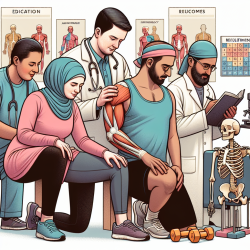Introduction
Shoulder pain, specifically rotator cuff-related shoulder pain (RCRSP), is a prevalent issue affecting up to 70% of individuals at some point in their lives. This condition often leads to persistent pain and functional limitations, with exercise therapy being a primary non-surgical intervention. However, approximately 30% of patients do not experience significant symptom relief, potentially due to inappropriate exercise selection or dosage. A recent study titled "Rotator cuff-related shoulder pain: does the type of exercise influence the outcomes?" explores the efficacy of different exercise approaches in managing RCRSP.
Study Overview
This randomized controlled trial (RCT) involved 123 adults with RCRSP, who were divided into three groups: education only, strengthening exercises, and motor control-focused exercises. The study aimed to compare the short, mid, and long-term effects of these interventions on symptoms, functional limitations, kinesiophobia, and pain catastrophizing.
Key Findings
- Education: While patient education is crucial for reducing false beliefs and increasing self-efficacy, it may not suffice for all patients, particularly those with muscular weaknesses or altered muscle recruitment patterns.
- Strengthening Exercises: These exercises target muscle groups to enhance strength and reduce pain. The study suggests that strengthening exercises can improve the capacity of tendons to sustain load, thereby decreasing pain and muscle weakness.
- Motor Control Exercises: These exercises focus on improving muscle recruitment patterns and kinematics, potentially reducing pain and disability. They also address fear-avoidance behaviors, encouraging movement in previously feared positions.
Implications for Practitioners
The study's findings highlight the importance of tailored exercise interventions for RCRSP. Practitioners should consider the following:
- Assess individual patient needs to determine the most appropriate exercise approach.
- Incorporate both strengthening and motor control exercises to address different aspects of RCRSP.
- Educate patients about their condition to enhance self-efficacy and adherence to exercise programs.
By implementing these strategies, practitioners can improve patient outcomes and reduce the persistence of symptoms.
Conclusion
Identifying the most effective exercise interventions for RCRSP is critical for improving patient outcomes and reducing healthcare costs. This study provides valuable insights into the benefits of different exercise approaches, encouraging practitioners to adopt data-driven strategies in their practice.
To read the original research paper, please follow this link: Rotator cuff-related shoulder pain: does the type of exercise influence the outcomes? Protocol of a randomised controlled trial.










